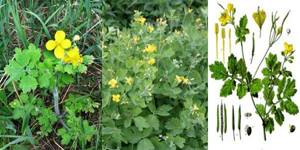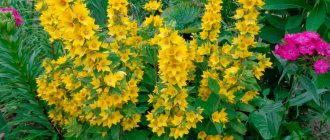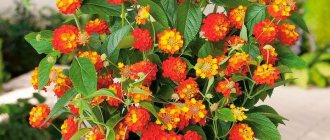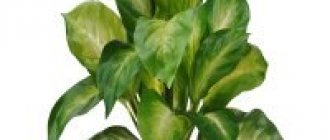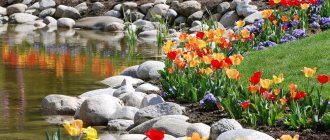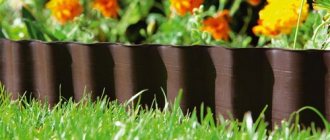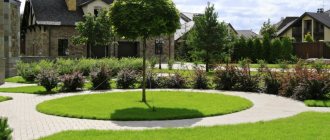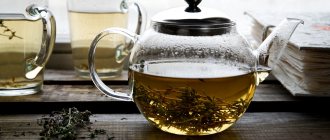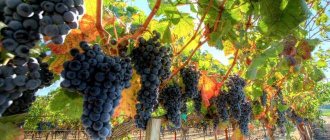Arctic flora
In the far north of the country there are arctic deserts. In winter, the temperature drops to -60 degrees Celsius, and in summer it is no more than +3 degrees. The territory is completely covered with glaciers and snow, so it is difficult to say that plants grow here in the classical sense. All that is here are mosses and lichens. In summer you can sometimes find alpine foxtail, snowy saxifrage and arctic buttercup.
Alpine foxtail
Saxifraga snow

Arctic buttercup

Plants of the steppe and forest-steppe
The peculiarity of the flora of the steppe is that hundreds of species have been destroyed and many ecosystems have been greatly changed, since people use the steppe for agriculture, so instead of wild herbs there are agricultural fields and places for grazing livestock. This area has the richest soil. In those places where nature reserves and reserves are organized, nature is still preserved in its original form. Here you can find different types of tulips and meadow sage, irises and steppe cherries, some types of mushrooms (for example, champignons) and cutter, feather grass and kermek, astragalus and field sow thistle, cornflower and cumin, elecampane and forest parsnip, sedum tenacious and burnet.
Herbaceous plants: annual and perennial
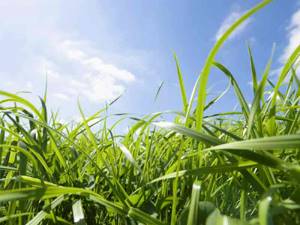
Herbs consist of a root system, stem, leaves and flower parts. Unlike trees and shrubs, they, as a rule, have lush green non-lignified stems, which, together with the leaves, are not able to survive an unfavorable season and die off after the end of the growing season, falling to the soil surface. The only exceptions are the tropics, where grasses have perennial above-ground parts, sometimes reaching very impressive sizes.
Herbaceous plants usually grow in open areas and provide easily accessible food for a variety of animals. Their flowers are inconspicuous, small, with tiny scales, and grow in inflorescences. They are located on long stems, exposing them to the wind, which serves as an excellent pollinator. The fibrous roots of these plants grow so much that they form a tangled layer in the soil - turf, the thickness of which is several centimeters. It strengthens the soil, does not allow strong winds to carry it away, and a day or two after the rain it gives life to new leaves.
Many of these plants have medicinal properties - these are the so-called medicinal herbs. They create a gentle and effective effect on the human body with no side effects, are able to maintain it in good tone, increase performance and improve the quality of life. With their help, many diseases have been successfully treated since ancient times.
Herbs are very unpretentious plants and only need plenty of light. They are not at all able to exist in the deep shade of the forest, but they can easily withstand the lack of rain, the scorching sun, cutting with a lawn mower and constant plucking by grazing animals. They are even able to survive a fire: if the fire devours their leaves, the root system remains intact. Such remarkable endurance of herbs is explained by the characteristics of their growth. Their vessels, unlike trees and shrubs, do not form a network, but stretch along the entire length of the leaf. The leaf growth point is located at its base and is active until the end of the plant’s life. Therefore, if the upper part of the leaf is damaged or torn off, it continues to grow from the base.
All herbaceous plants are divided into annual, biennial and perennial.
- Annuals (millet, tomato, aster, cornflower, etc.) die off completely after the flowering and fruiting season ends, and then grow again from seeds. They go through their full life cycle in one season. In spring annual grasses, seeds germinate in the spring, and the plants die in the fall. In winter annuals, the seeds begin to germinate in the fall, then the plants overwinter as shortened shoots, and over the next year they bloom, bear fruit and die.
- Biennial herbs (carrots, cabbage, parsnips, caraway seeds, burdock, etc.) live for two years. In the first year, a taproot and a shoot with basal leaves develop from the seeds, and a flowering shoot is formed the next year. After the flowering and fruiting season, biennials also die off. In addition, they are distinguished from annuals by the presence of remnants of last year's leaves at the base of the stem, and from perennials by the absence of rhizomes, bulbs and tubers.
- In perennial herbs (peony, mint, dahlia, clover, tulip, etc.), creeping on the ground or underground shoots live for several or many years, and above-ground ones - only one year. Many of them only reach the flowering period five to ten years after seed germination, which can repeat for up to two decades. The above-ground parts of these plants do not become lignified and die off completely, and new shoots grow annually from renewal buds located on underground shoots.
Growing herbs from seeds is now as widespread as growing ornamental or potted plants, even though many varieties of herbaceous plants are bred through selective breeding and propagated vegetatively. The collection of herbs cannot be carried out completely (plucking every single plant). It is imperative to leave 1/5 of the plants so that they can further reproduce and develop.
Flora of deserts and semi-deserts
In areas where desertification is occurring, and where there have been deserts for hundreds of years, a special world of flora has formed. At first glance, not much grows here. But it is not so. There are oases in deserts, and after rain (which happens very rarely, once every few years), the desert blooms with amazing colors and shimmers with all the colors of the rainbow. Anyone who has seen a flowering desert will never be able to forget this wonderful phenomenon. In this natural area grow wormwood and bulbous bluegrass, camel thorn and solyanka, cereals and kendar, sand acacia and tulips, saxaul and conifer, as well as various cacti and ephemera.
Areas of application
Herbaceous plants have been used by people for a long time. Their use depends on individual characteristics.
(basil, thyme, rosemary, dill, parsley, caraway, mint) are used to improve the taste of food and to make seasonings.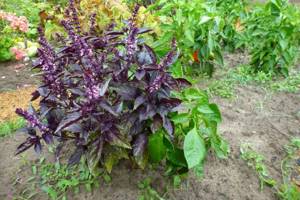
Spices- Medicinal herbs (chamomile, sage, mint, calendula, lavender, plantain) are used in folk medicine and the production of pharmaceuticals.
- Ornamental, climbing and flowering plants are used to decorate garden plots, parks and other areas.
- Fodder is grown as food for domestic animals.
Medicinal herbs
Medicinal herbs are the basis of most folk recipes. Such species grow in the natural environment - horsetail grows along river banks, in meadows and in sparse forests. It is used for heart conditions and as a diuretic.
On the slopes of ravines and in forests among bushes you can find spring primrose, so named for its early flowering. Its leaves contain a large amount of vitamins, so a decoction of them is used for vitamin deficiencies. In folk medicine, its roots are used to prepare an expectorant decoction.
In forest-steppe and steppe zones, motherwort grows, from which cardiac sedatives are made.
Decoration of the territory
Ornamental herbal plants are used to decorate areas. They are planted in flower beds, flower beds, borders, modular flower beds, etc. They are conventionally divided into two groups:
- beautifully flowering;
- decorative foliage.
Types are selected depending on the conditions: soil composition, illumination of the place, proximity to groundwater, climate. Your wishes are also taken into account - the color of the buds, the flowering period.
There is a wide variety of species that will interest gardeners. For example, large blue geranium buds look very beautiful and will delight the eye almost all summer. Large plantings of oak sage look very impressive. The species has many varieties, differing in the shades of their buds. If you cut off the first flowers of sage, the crop will bloom again. At the same time, sage is one of the most unpretentious species.
Mountain plants
On the territory of the mountains there are almost all natural zones: mixed forests, taiga, and forest-steppe. It's cold high in the mountains, there are glaciers and snow cover. Various coniferous and broad-leaved trees grow on the slopes. Among flowers, plants and herbs, the following species are worth noting:
- alpine poppies;
- maral root;
- spring gentian;
- Siberian barberry;
- edelweiss;
- bergenia;
- America;
- alyssum;
- lavender;
- catnip.
List of plants of Russia
Below is a list of some trees, shrubs, herbs with descriptions and photos that characterize the flora of Russia.
Fluffy birch
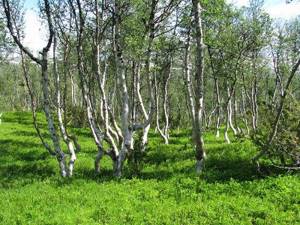
Downy birch is a species of deciduous tree found throughout northern Europe and northern Asia, growing further north than any other broad-leaved tree on the planet. Often confused with a related species, silver birch, but downy birch prefers wetter areas and grows well in heavy and poorly drained soils; young trees are also easily confused with dwarf birch.
Common hornbeam
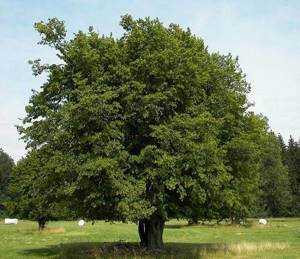
The common hornbeam, also known as the European or Caucasian hornbeam, is a species of deciduous tree native to Western and Central Asia and Eastern and Southern Europe. It prefers warm climates and is found only at altitudes up to 600 meters above sea level. It grows in mixed forests together with oak, and in some areas with beech.
English oak
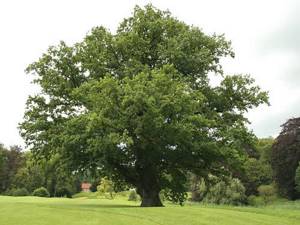
A tree from the beech family that is widespread in the European part of Russia. It is the dominant tree species in the southern regions of the forest and forest-steppe zones. It is a large deciduous tree, reaching 40 meters in height and 4-12 meters in trunk circumference.
Siberian spruce
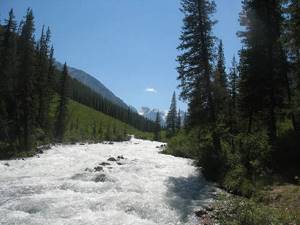
Siberian spruce is a coniferous tree, a species of spruce native to Siberia, growing from the Ural Mountains east to the Magadan region, as well as from the Arctic forest line to the Altai Mountains in northwestern Mongolia.
White willow
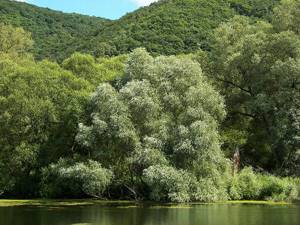
White willow is a species of willow found in Europe, Western and Central Asia. The name comes from the white tint on the undersides of the leaves. These are medium to large deciduous trees, growing up to 10-30 meters in height, with a trunk diameter of about 1 meter. The bark is grey-brown, deeply fissured on old trees.
Field maple

Native to much of Europe, the British Isles, South-West Asia (from Turkey to the Caucasus) and North Africa (in the Atlas Mountains), a species of tree from the Sapindaceae family. They are also successfully cultivated outside their natural range in the United States and Western Australia in areas with a suitable climate. In Russia, it is most common in the middle zone of the European part of the country.
This is a deciduous tree, reaching 15-25 meters in height, with a trunk up to 1 meter in diameter and finely fissured, thin bark.
Siberian larch
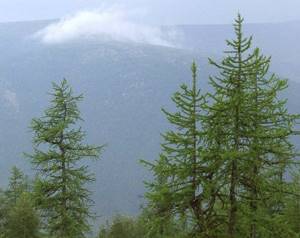
Siberian larch is a frost-resistant conifer growing in western Russia, from the Finnish border east to the Yenisei valley in central Siberia, where it hybridizes with Gmelin larch; the hybrid is known as Chekanovsky Larch.
Siberian larch reaches 20-50 meters in height, with a trunk up to 1 meter in diameter. The crown is conical in young trees, and acquires an oval-round shape as it grows.
Common juniper
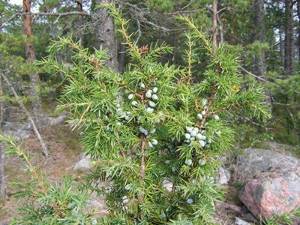
Common juniper is a conifer species with the largest geographic range of any woody plant, with a circumpolar distribution throughout the subarctic belt, from the Arctic south to 30°N latitude in North America, Europe and Asia. Relict populations can be found in the Atlas Mountains of Africa. On the territory of Russia, it is found in forests and forest-steppe of the European part of the country, as well as in the western and, less often, eastern regions of Siberia.
Common juniper is a small evergreen tree or shrub of very variable shape and up to 16 meters in height.
Gray alder
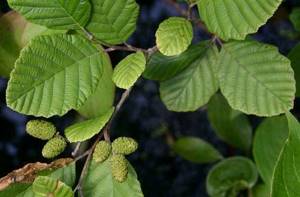
Gray alder is a species of the alder genus with a wide range in cold regions of the northern hemisphere.
The size of the trees varies from small to medium, with a maximum height of about 15-20 meters, smooth gray bark (even in older specimens), and a lifespan of no more than 60-100 years.
Aspen

Aspen is a species of deciduous tree native to temperate and cool regions of Europe and Asia, from Iceland and the British Isles east to Kamchatka, north to the Arctic Circle in Scandinavia and Russia, southern and central Spain, Turkey, Tien Shan, North Korea and Northern Japan.
Plant protection
In Russia there are many endangered species of flora listed in the Red Book. They are under state protection and cannot be torn down. These are the curly lily and the yellow red lily, the large-flowered slipper and the Siberian lily, the yellow water lily and the tall strodia. To preserve the flora, national parks, reserves and reserves have been created: Khingansky, Sikhote-Alinsky, Lazovsky, Ussuriysky, Baikalsky, Prioksko-Terrasny, Kuznetsky Altau, Stolby, Kronotsky, Caucasian. They are aimed at preserving nature in the wild and preserving as many of the country’s ecosystems as possible.
Herbaceous plants of the family
(photos of various herbs)
People interested in collecting and preparing herbs, as well as traditional herbal treatment, need to know
what
a particular herb looks like in a photo In this article you can see what the most popular medicinal herbs look like in the photo, as well as read brief descriptions of them. WORMWORM - looks like a perennial herb or subshrub with a height of 3 to 150 cm, having a thick root.
Its stems are straight. The plant has dense white-gray drooping. The leaves of wormwood are pinnately or palmately divided, sometimes dissected whole, the lobes are small and thin.
The lower leaves are larger. The scanty yellow (rarely reddish) flowers are collected in small inflorescences. The fruits are small and smooth, the achenes do not have a tuft.
What wormwood grass looks like (photo of wormwood)
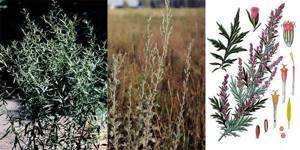
ORIGINAL is a perennial herbaceous plant with a height of 30-75 cm with a bare creeping rhizome.
Oregano looks like a subshrub with a 4-sided, erect and bare stem at the top. Oregano leaves are petiolate, oblong-ovate, opposite, pointed at the tip, dark green above, gray-green below, length from 1 to 4 cm.
Small pink or pink-purple flowers are collected in small corymbose-paniculate inflorescences, the bracts are most often dark red in color, and the corollas are purple with a pinkish tint. Oregano grass blooms in July-August.
What the herb oregano looks like (photo of oregano)
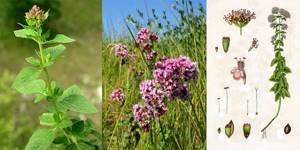
SNOW is a herb that belongs to the Umbelliferae family.
It looks like this: the leaves are oblong, ovoid, located on long stalks. Inflorescences in the form of umbrellas without leaves or involucre. The flowers are small, white, sometimes pink. They have 5 stamens. The fruits are flattened laterally and have thin thread-like ribs.
What does the grass look like (photo of the grass)

St. John's wort is a perennial herb, more precisely a subshrub, shrub or even tree.
St. John's wort has a tetrahedral stem. Leaves are opposite. entire, sometimes translucent. The cuttings are short. Flowers solitary or numerous in semi-umbrellas. The flower has 5 sepals. The fruit looks like a leathery capsule, which, when ripe, cracks into three to five multi-seeded nests.
What the herb St. John's wort looks like (photo of St. John's wort)

Datura is a herb, less often a tree-like plant. The height of the grass is from 0.5 to 1 m.
The stem is bare and erect. The leaves are ovate-pointed, alternate, up to 15 cm long, up to 10 cm wide, dark green above, slightly lighter below. The flowers are located in the forks of the stem, solitary and large. The corolla is white. The fruit is large, ovoid, and is basically a four-locular capsule covered with multiple spines.
When ripe, the box dries completely and splits into 4 leaves. The plant is poisonous .
What does Datura grass look like (photo of Datura grass)
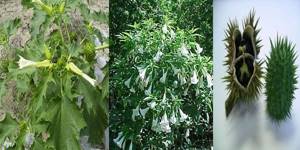
What woodlouse grass looks like (photo of woodlouse grass)
Woodlice or chickweed is an annual plant.
It has a branched-creeping cylindrical stem, up to 10 cm high. Woodlice leaves are ovoid in shape with pointed edges. The flowers are small, white, and star-shaped.
The grass blooms in May - August.
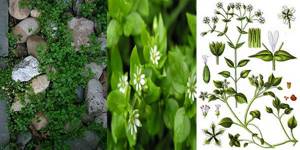
Celandine (Warthog) is a herbaceous perennial plant with a straight, branched stem, the height of which reaches from 50 to 100 cm.
At the break, the chesotel secretes a thick, milky juice, which, under the influence of oxygen, gradually acquires an orange-red hue. The leaves are deeply pinnately divided, petiolate, having 3-5 pairs of oval lobes. The flowers are regular in shape, collected in a simple umbrella type, and have a golden yellow color. Each flower has 4 petals, each of which is about 1 cm long.
The grass blooms from May to August. The fruits look like many seed pods.
